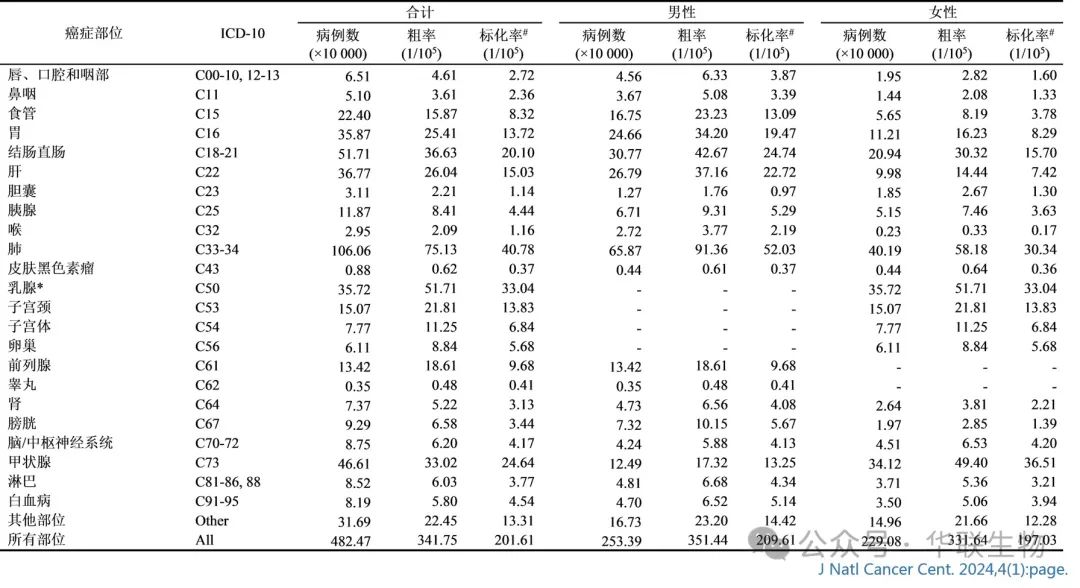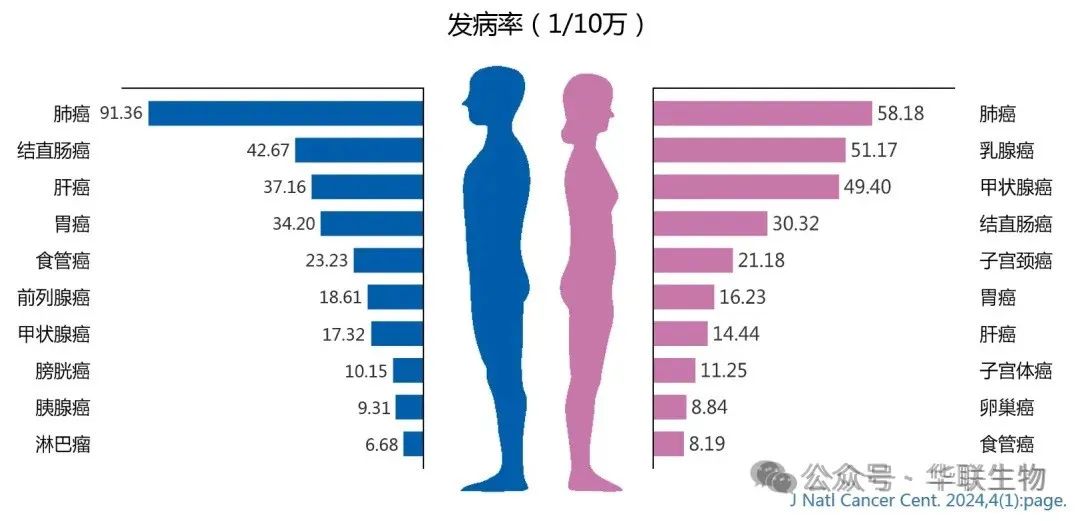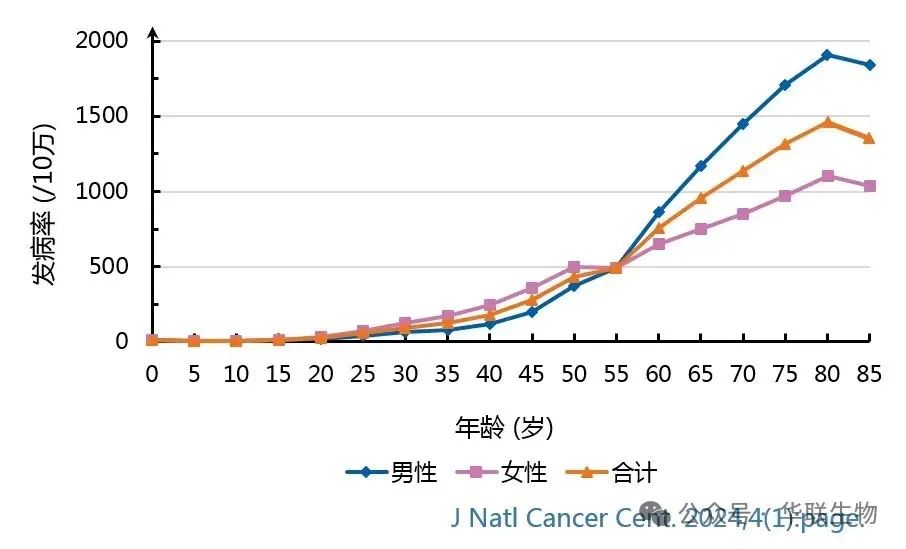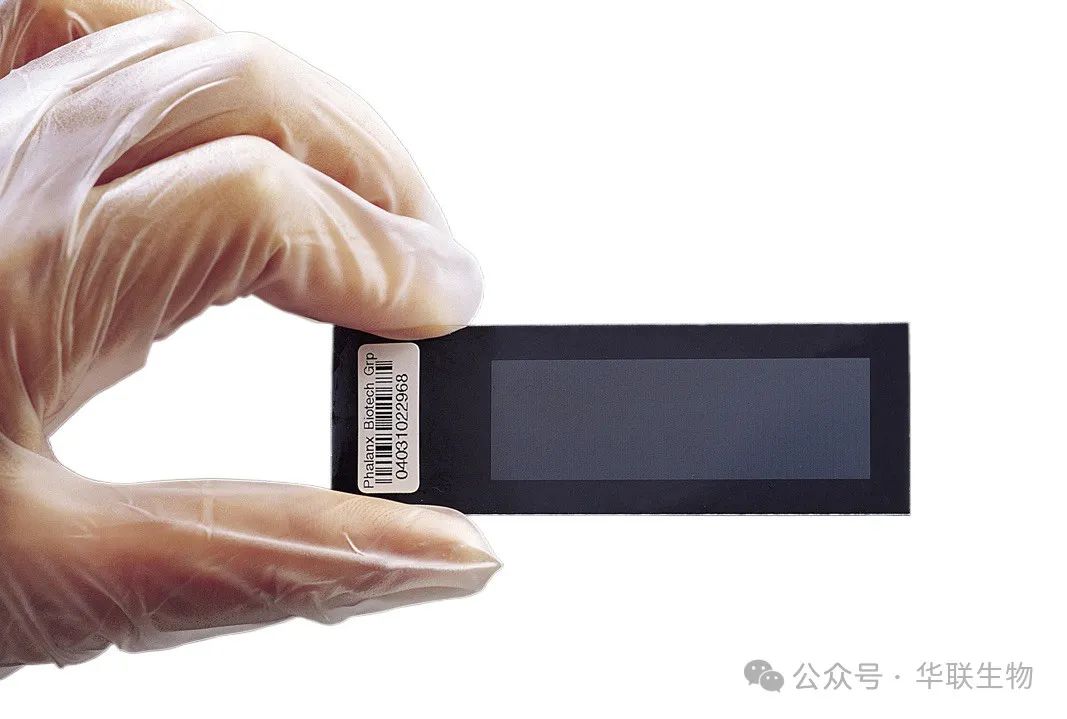In 2024, the National Cancer Center of China released the latest data based on tumor registration and follow-up monitoring on the JNCC,2022 cancer burden in China. The results published this time are jointly calculated by the National Cancer Center and the International Agency for Research on Cancer (IARC), consistent with the Chinese data released by IARC in GLOBOCAN 2022. The quality and standardization of cancer registration data in China have further improved, gaining recognition both domestically and internationally. The updated malignant tumor burden data can provide a more objective basis for cancer prevention and control and the implementation of national health strategies.
Cancer remains a significant public health issue in China, with the cancer spectrum in the country reflecting a coexistence of cancer patterns from both developed and developing nations.
In 2022, the estimated number of new cases and deaths from malignant tumors in China increased compared to previous years. The rise in incidence is attributed to an aging population and an increase in public awareness of cancer prevention, along with more accessible medical conditions, leading to more residents actively participating in cancer screenings and early diagnosis and treatment programs. More cancer cases are being detected in a timely manner. The increase in deaths is primarily due to the aging population. Lung cancer is the leading cause of incidence and mortality from malignant tumors in China. The top five malignant tumors by incidence are lung cancer, colorectal cancer, thyroid cancer, liver cancer, and gastric cancer, while the top five by mortality are lung cancer, liver cancer, gastric cancer, colorectal cancer, and esophageal cancer.
New cases:4.8247 million
World standard incidence rate:201.61/100,000
Male world standard incidence rate is higher than female (209.61/100,000 vs 197.03/100,000)


Age distribution of malignant tumors
In females, the incidence rate for all cancers is relatively low in the 0-34 age group, significantly increasing from the 35-39 age group, peaking in the 80-84 age group.
In males, the incidence rate is lower than that of females in the 25-54 age group, but higher in those over 60.

All cancersStandardizedIncidence Rateincreases by an average of1.4%
Increase:
Male: Thyroid cancer, prostate cancer, colorectal cancer
Female: Thyroid cancer, cervical cancer, uterine cancer, lung cancer, breast cancer
Decrease:
Male and female: Esophageal cancer, gastric cancer, liver cancer
All cancersStandardizedMortality Ratedecreases by an average of1.3%Increase:Male: Prostate cancer, colorectal cancer, pancreatic cancerFemale: Cervical cancer, ovarian cancerDecrease:Male and female: Esophageal cancer, gastric cancer, liver cancer
From 2000 to 2018, the standardized mortality rate for all cancers decreased by an average of 1.3% per year, particularly for esophageal cancer, gastric cancer, and liver cancer, which showed a significant downward trend in age-standardized incidence and mortality rates. This reflects China’s long-term commitment to comprehensive cancer prevention and control efforts, especially the preliminary effects of gradually promoting upper gastrointestinal cancer screening since 2005.
In the future, it is essential to continue implementing the specific requirements of the Healthy China Action and the Cancer Prevention and Control Action Plan, steadily advancing in key areas such as comprehensive prevention and control of risk factors, cancer screening, early diagnosis and treatment, and standardized treatment, aiming to curb the rising trend of cancer burden by 2030.
Personalized genetic testing services (Personal Genome Service, PGS) utilize advanced genetic technology to help you gain a deep understanding of your genetic constitution from a scientific perspective, thereby providing you with the best strategies for disease prevention. PGS includes sample collection (blood, stool, etc.), genotype identification, data analysis, health management recommendations, and professional consulting services.
Your samples will be handled by professional technicians. After extraction, amplification, and purification, the samples will react with microarray biochips for 16 hours. The completed chips will be washed with a cleaning solution, and then the images of the chips will be captured using a microarray scanner (as shown in the left image). Each bright spot on the image represents a genetic variant genotype identification result. We use image analysis software to convert each bright spot into fluorescence data, which allows us to determine your genotype identification results.

Microarray chips are a high-tech genetic testing technology that can identify genetic variant genotypes or gene expression through extremely fine probes on the chip. We provide genotype identification services using SNP microarray chips produced by Hualian Biotechnology.
